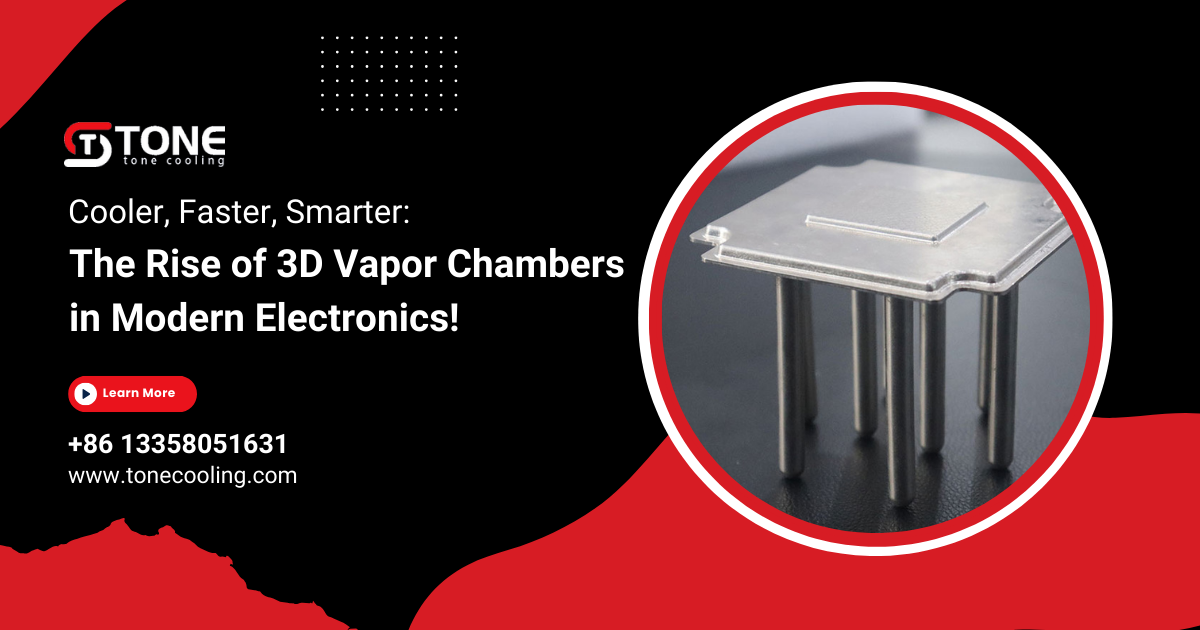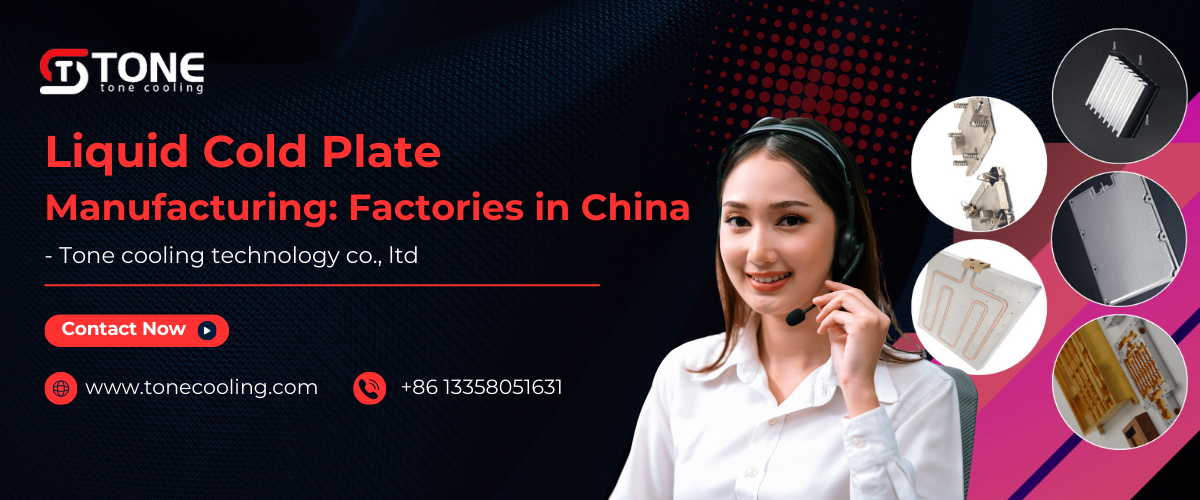In the fast-evolving world of electronics, performance isn’t just about speed—it’s also about thermal efficiency. As devices become smaller, faster, and more powerful, managing heat has become one of the most critical challenges for engineers and designers. Traditional cooling solutions, while still widely used, are increasingly struggling to keep pace with the demands of cutting-edge processors, GPUs, and compact consumer electronics. Enter the 3D vapor chamber—a game-changing innovation that’s rapidly revolutionizing the thermal management industry.
A phase-change cooling system’s fundamental components include a vapor chamber. However, with the introduction of 3D architecture, these advanced chambers are now engineered not only to dissipate heat more efficiently but also to do so in three-dimensional space, effectively allowing heat to be transferred in multiple directions. This breakthrough design dramatically improves heat distribution and opens the door for more compact and high-performance electronics across industries.
What is a 3D Vapor Chamber?
A 3D vapor chamber is a highly advanced thermal management device designed to evenly spread heat away from high-performance electronic components. Unlike flat heat sinks or traditional vapor chambers, 3D chambers are engineered in a three-dimensional form, allowing for heat to be channeled and dissipated in multiple directions. This is particularly valuable in compact and high-density systems where surface area is limited, but the heat load is intense.
How 3D Vapor Chambers Work
-Heat Transfer Basics
The system’s basic idea is simple: move heat efficiently and quickly from one place to another. Vapor chambers work by leveraging the phase change of a working fluid, typically water or an advanced coolant.
-Phase-Change Mechanism
The fluid inside the 3d vapor chamber evaporates upon absorbing heat, then travels to a cooler section where it condenses, releasing the heat in the process. A cycle repeats when condensed liquid is returned to the heat source via a wick structure or a capillary mechanism. In 3D configurations, this process happens not just laterally but vertically and diagonally, vastly increasing heat dissipation capacity.
-2D vs 3D Vapor Chambers: What’s the Difference?
Traditional vapor chambers (2D) only spread heat across a single plane—great for flat motherboards or GPUs. However, 3D vapor chambers enable thermal spreading across various planes and angles, perfect for multi-layered or unconventional designs, such as foldable smartphones or ultra-compact laptops.
-Why 3D Vapor Chambers Matter in 2025
Electronics are shrinking, but performance expectations are skyrocketing. With the explosion of AI, high-speed processing, and multi-core chips, traditional cooling methods just aren’t cutting it anymore. In 2025, 3D vapor chambers are filling the thermal gap, enabling designers to pack more power into smaller, thinner, and quieter devices.
Thermal Challenges in Modern Electronics
-Compact Devices, Bigger Heat Problems
From wearable tech to foldable smartphones and ultra-thin laptops, today’s gadgets have little room for airflow or large heat sinks.
-Limitations of Conventional Cooling
Fans can be noisy, bulky, and prone to mechanical failure. Meanwhile, passive heatsinks often struggle to keep up with thermal loads in high-performance systems. 3D vapor chambers offer a passive, silent, and high-efficiency solution.
Benefits of Using 3D Vapor Chambers
-Multidirectional Heat Spreading
Unlike conventional solutions, 3D vapor chambers allow heat to move in all directions, ideal for modern 3D PCB layouts and tightly integrated systems.
-Thinner and Lighter Designs
By replacing bulky heat pipes and fans, these chambers contribute to slimmer form factors without compromising on performance.
-Noise-Free Operation
No moving parts means zero operational noise, enhancing the user experience, especially in consumer electronics.
Key Industries Adopting 3D Vapor Chambers
-Smartphones & Tablets
With limited space and high-performance demands, mobile devices are top candidates for 3D vapor chambers.
-Laptops & Gaming Devices
Gamers and creators benefit from quieter, cooler, and more reliable machines that don’t overheat during extended use.
-Data Centers
High-density server stacks produce immense heat. 3D vapor chambers help maintain performance and prevent thermal throttling.
-Electric Vehicles
Battery management systems and power modules in EVs generate significant heat. Efficient thermal solutions are vital for safety and efficiency.
-Industrial Machinery
Precision tools and robotics require stable thermal environments. 3D vapor chambers improve longevity and accuracy.
Material Science Behind the Magic
These chambers typically use copper, aluminum, or graphene-based composites, chosen for their thermal conductivity and reliability. Advanced sintering and additive manufacturing techniques are often used to create the internal wick structures and chamber walls.
Tone Cooling Technology Co., Ltd.’s Function
-Innovation and Precision Engineering
Tone Cooling Technology Co., Ltd is at the forefront of 3D vapor chamber development. Their engineering team tailors each product to the exact needs of the client—from material selection to geometry and thermal resistance specs.
-Custom Solutions for High-Performance Electronics
Whether you’re building a next-gen smartphone or designing thermal controls for an autonomous vehicle, Tone Cooling delivers cutting-edge, durable, and scalable solutions.
Case Study: How a 3D Vapor Chamber Improved Device Performance
In a recent project, a gaming laptop manufacturer partnered with Tone Cooling to resolve overheating issues. By integrating a custom 3D vapor chamber, they reduced the average CPU and GPU temperature by 18°C—resulting in quieter fan speeds, longer hardware life, and a 12% increase in processing performance under load.
Cost Considerations: Are They Worth the Investment?
Yes—especially when you factor in performance boosts, device longevity, and user satisfaction. While 3D vapor chambers may have higher upfront costs, the return on investment through reduced failures, better efficiency, and competitive edge makes them a smart choice.
The Future of Thermal Management
As tech continues to evolve, expect to see 3D vapor chambers become the standard rather than the exception. They’ll play a crucial role in AI computing, IoT, 5G infrastructure, and even space-grade electronics.
Tips for Choosing the Right Vapor Chamber for Your Application
- Understand your thermal load requirements
- Select the right material based on conductivity and weight
- Work with manufacturers like Tone Cooling Technology Co., Ltd for custom designs
- Evaluate form factor and available space
- Test for long-term reliability
In a world where speed and compact design dominate, thermal solutions must evolve—and 3D vapor chambers are leading that evolution. By offering unmatched heat dissipation in a space-saving form, they are enabling smarter, faster, and more reliable electronic systems. If you’re in the business of building next-gen technology, it’s time to embrace the cooling tech of the future—and companies like Tone Cooling Technology Co., Ltd. are making it easier than ever to do just that.
Frequently Asked Questions
1. What makes a 3D vapor chamber better than a traditional heat sink?
Unlike standard heat sinks, 3D vapor chambers can spread heat in multiple directions, improving thermal performance in compact and multi-layered devices.
2. Are 3D vapor chambers expensive to produce?
They can be more costly than traditional solutions, but the performance, reliability, and design flexibility often justify the investment.
3. In which locations are 3D vapor chambers most frequently utilized?
They’re widely used in smartphones, gaming laptops, data centers, EVs, and industrial systems.
4. Can I retrofit a 3D vapor chamber into an existing system?
It depends on the design. Retrofitting may require engineering adjustments, so it’s best to consult with a supplier like Tone Cooling for feasibility.
5. What materials are best for vapor chambers?
Copper is the most common due to its high thermal conductivity, though aluminum and advanced composites are also used depending on the application.

